Defense Positions in Soccer
There are two main positions in soccer defence: center backs and full backs. The two central defenders are the most important players in the defensive line. They are usually the tallest and strongest players on the team and their main job is guarding the goal, maintaining the defensive line, marking opposing players, and intercepting passes. The full backs, on the other hand, typically have more offensive responsibilities. They are often smaller and quicker players, regularly pushing up the field to support the team’s offensive efforts.
The most common defensive formation is the 4-4-2, which features four players in defence, four midfielders and two forwards. However, there are a variety of formations coaches can use to strengthen their defence, such as the 5-4-1 or the 3-5-2, utilising wing backs. These formations will position the defenders differently in order to provide better coverage and close down open spaces.
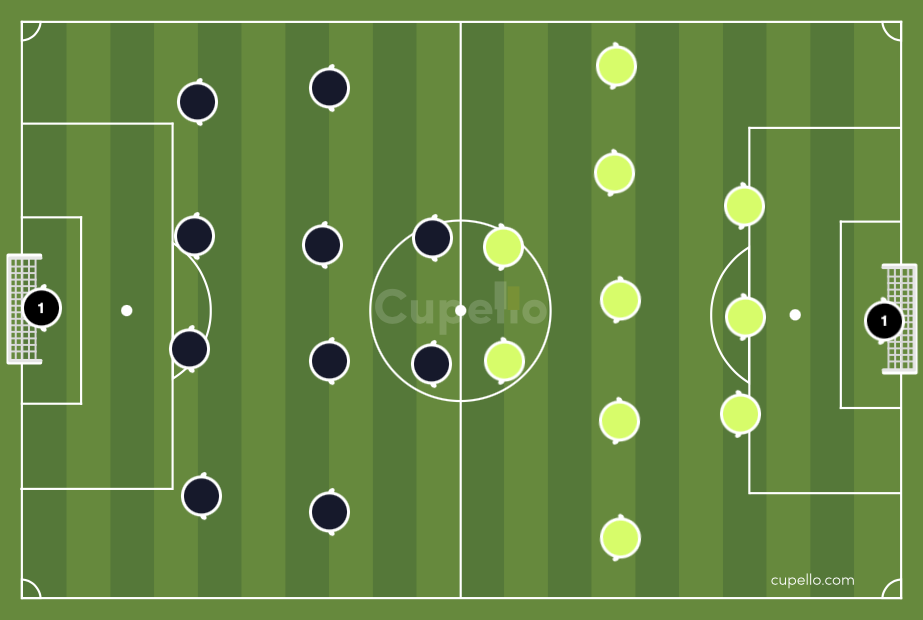
4-4-2 vs 3-5-2
Defensive soccer coaches, such as Jose Mourinho or Diego Simeone, are known for their ability to create a solid and organized defensive system that is difficult for opposing teams to break down. These coaches prioritize defensive stability and structure, often employing tactics such as the offside trap, pressing, and zonal marking.
One defensive strategy that is commonly used by coaches is the offside trap. This tactic involves the backline pushing up as a unit, catching the opposing team’s attackers offside and limiting their attacking options. Another tactic is pressing, which involves the team putting pressure on the opposing team’s attackers as soon as they receive the ball, forcing them to make mistakes and limiting their time on the ball. Finally, zonal marking is a popular tactic that involves each defender being responsible for a specific area of the field, rather than marking an individual player. This can be particularly effective in limiting the movement of the opposing team’s attackers and closing down open spaces.
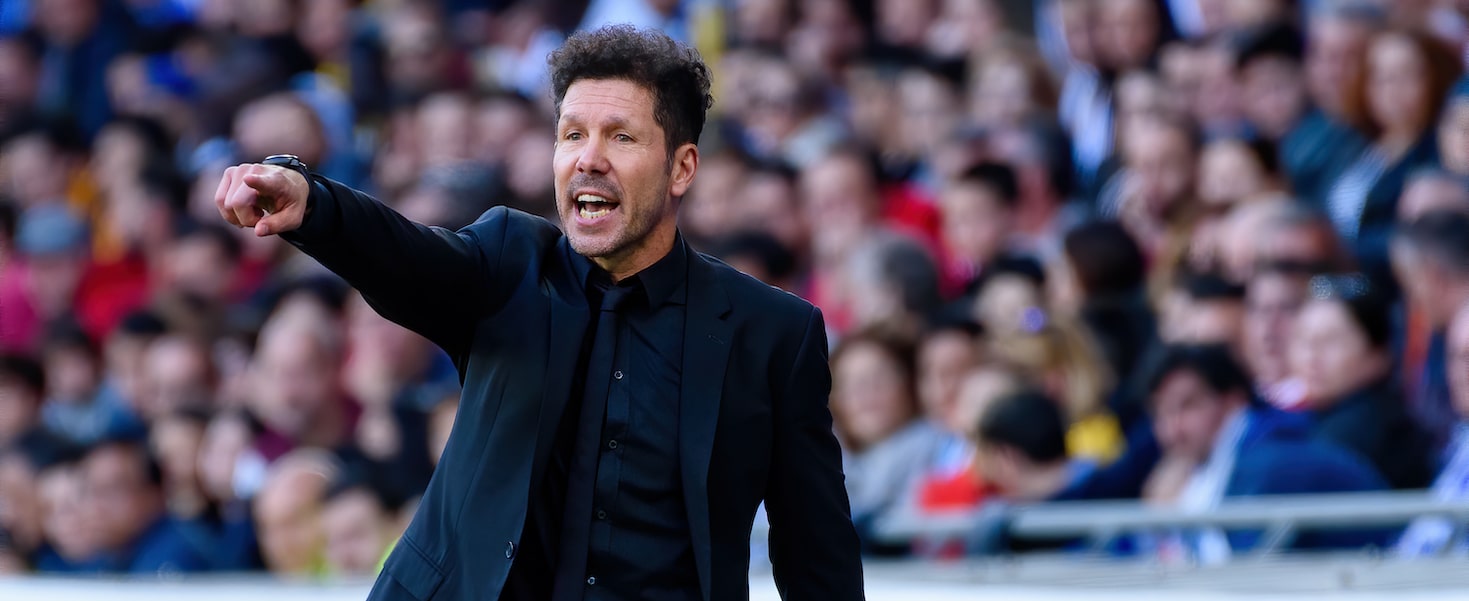
Diego Simeone is known for his hard to break down Atletico Madrid side
Overall, successful defensive coaches are able to not only create a strong defensive structure, but also adjust their tactics based on the strengths and weaknesses of their team and the opposing team. By prioritizing defense and utilizing effective tactics, coaches can set their team up for success and improve their chances of winning matches.
Defensive Positions: Understanding the Basics
In soccer, defensive positions are crucial to a team’s success. A well-organized defense can stop opposing teams from scoring and help secure victories. The most common defensive positions are the center backs and full backs. Center backs are responsible for protecting the central area of the field, while full backs are responsible for defending the sides of the field.
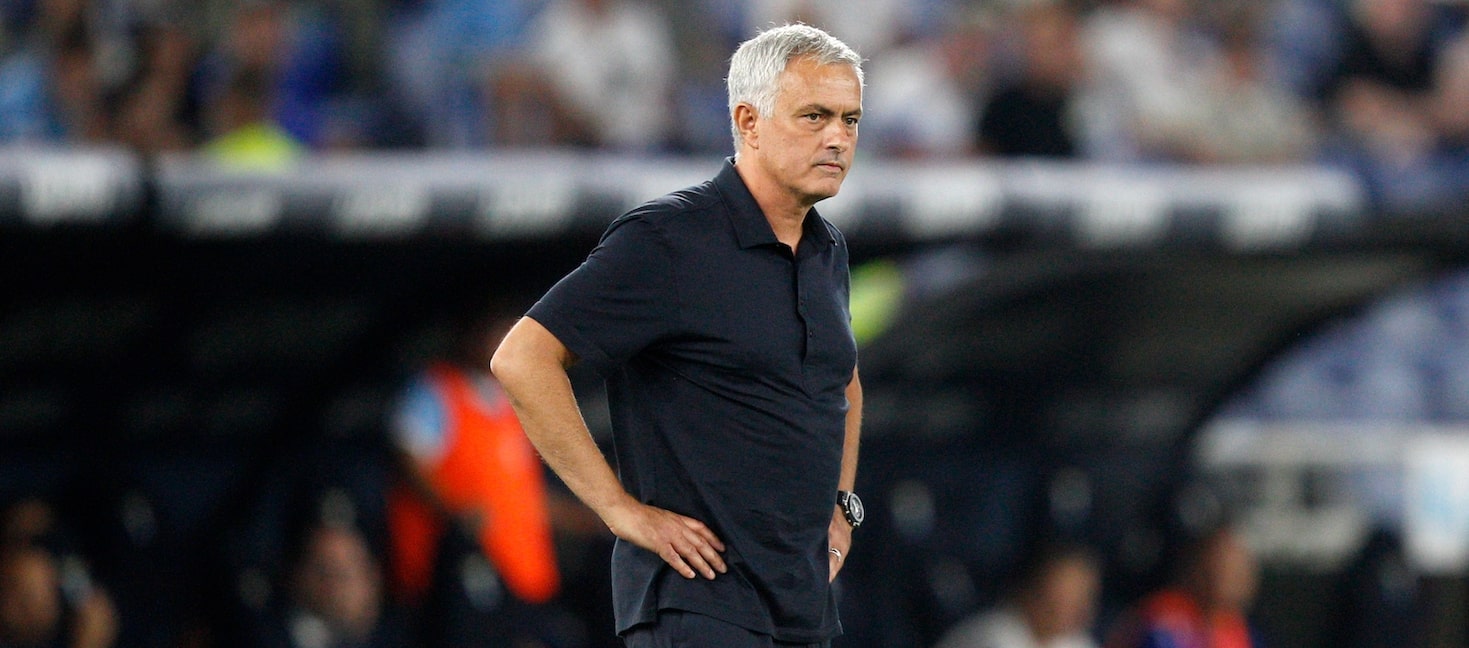
Jose Mourinho championed the defence position in soccer
Center backs are typically the tallest and strongest players on the team, and they are often positioned in the middle of the defense. Their primary responsibilities include clearing the ball, marking opposing players, and intercepting passes. Center backs need to be excellent communicators, as they are the ones responsible for directing the rest of the defense and keeping everyone organized.
Full backs, on the other hand, are typically smaller and quicker players. They are responsible for defending the sides of the field and supporting the team’s offensive efforts. Full backs are often expected to push forward and provide additional support to the midfield and forwards. They need to be quick on their feet and have good ball control skills in order to be effective.
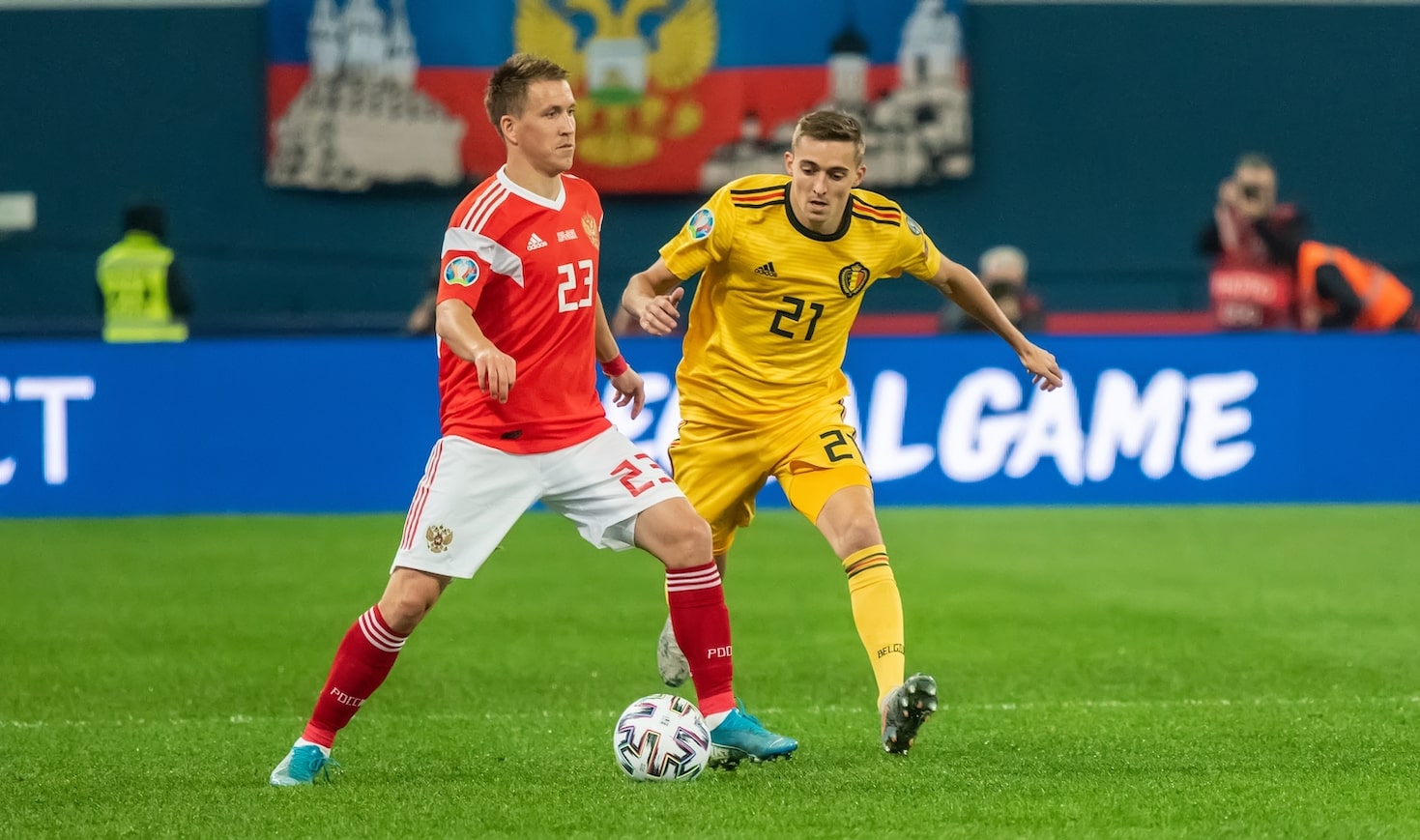
Castagne protects the space out wide
In addition to center backs and full backs, coaches may also use wing backs or sweepers to bolster their defense. Wing backs are similar to full backs, but they are typically positioned higher up the field and have more offensive responsibilities. Sweepers, on the other hand, are typically positioned behind the center backs and are responsible for sweeping up any loose balls that get past the defense.
Ultimately, a successful defensive strategy requires a combination of strong individual players and effective defensive coaching.
Strategies for Setting Up Defensive Walls
One of the most important strategies for setting up a strong defensive wall is to ensure that the players understand their roles and have good communication with each other when in defence. Each player should have a clear understanding of who they are marking and where they need to be positioned to best cover the field. As a coach, it is important to provide clear instructions on who each defender is covering and where they should be.
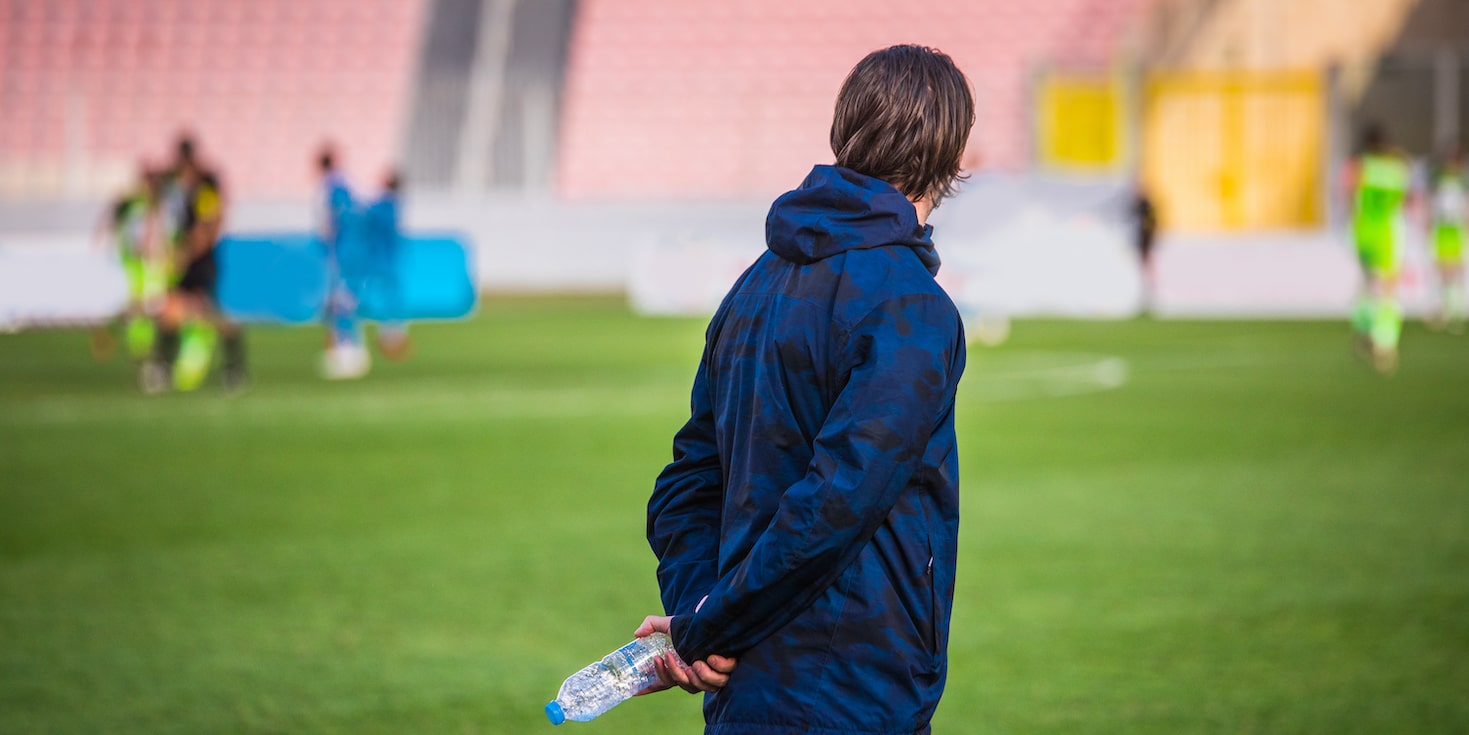
In addition to strong communication, coaches should also emphasize the importance of working as a unit in defence. Each player should move in unison and stay aware of their teammates’ positions, keeping a close eye on opponents and providing support in the form of tackles and interceptions. Strategic positioning is key; defenders should be aware of the best angles to close down opponents, while midfielders should provide support to recover the ball. Finally, defenders should work together to press opponents and close down their passing lanes. By creating an organized defensive line, coaches can help ensure their team’s success in keeping the ball out of the net.
One strategy that can be used to strengthen a team’s defensive line is the use of offside traps. Often used to catch out an attacking player who is in an offside position, an offside trap can prove to be an effective way of stopping an offensive attack, particularly for set pieces. The offside trap works by having the defenders move up the field in a staggered formation, with the two players in the middle forming a line. The defenders on the outside of the line move up quickly, while the players on the inside move up slowly to create a virtual wall. This traps the attacking player in an offside position, preventing them from participating in the play. By setting up an offside trap, defenders can effectively shut down an attack and give their team possession of the ball.
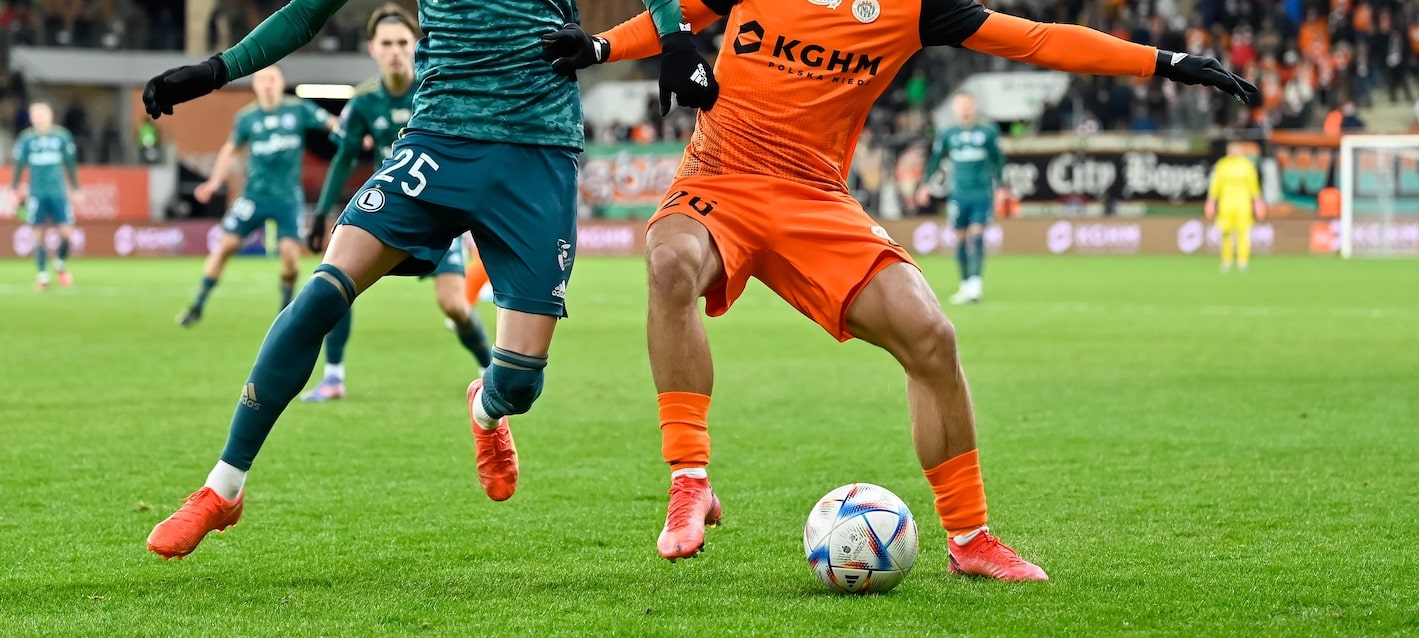
Defense Positions in Soccer
Fundamentals & Tips
Teaching players defensive fundamentals is essential to a team’s success. Coaches should focus on teaching players the basics of defensive positioning and strategy, as well as how to read the game and react to the opposition’s movements. Here are a few tips for doing just that:
1. Teach players the basics of defensive positioning such as how to set up a defensive wall and how to mark an opponent. Make sure the players understand where they should be positioned and who they should be marking, using the right defensive stance.
2. Focus on shifting and building knowledge of the game. Make sure that players understand the need for shifting and recognize when their team is out of position.
3. Emphasize communication. Make sure that players are communicating with one another and keeping a close eye on their opponents.
4. Teach players how to move as a unit. Defensive players should understand the importance of working together to close down passing lanes and press opponents.
5. Teach players the basics of tackling, interception and blocking. These are essential skills to help them stop opponents and recover the ball.
6. Encourage players to watch and learn from professional soccer matches. This can help them understand different defensive strategies and positioning techniques used by top-level players.
7. Train players to anticipate the movements of their opponents. This can help them stay one step ahead and make crucial interceptions or tackles.
8. Teach players how to stay on their feet and avoid committing unnecessary fouls. This can help prevent the opposition from gaining dangerous free-kicks or penalties.
9. Encourage players to be patient and not dive into tackles. Waiting for the right moment to make a challenge can be more effective than rushing in and risking a mistimed tackle.
10. Incorporate small-sided games and drills focused on defensive positioning and strategy. This can help players develop their skills in a more game-like setting.
By teaching players the basics of defensive fundamentals, coaches can help ensure the success of the team’s defensive strategy. With a strong defensive line, coaches can help their team keep the ball out of the net and be successful.
The Importance of Adaptability in Defensive Strategy
Adaptability is a crucial component of any successful soccer defense strategy. While it’s important to have a solid foundation of defensive fundamentals, no two opponents or situations are the same. A team that can adapt their defensive strategy in response to their opponents' tactics and formations is more likely to succeed.

Sergio Ramos for PSG
One of the key benefits of adaptability is the ability to neutralize an opponent's strengths. For example, if an opponent is known for their strong counter-attacks, a team may adjust their defensive shape to prioritize preventing counter-attacks over other defensive priorities. By recognizing and adapting to the opponent's strengths, a team can take a proactive approach to defending and limit their opponent's scoring opportunities.
Adaptability also allows for flexibility in response to changing situations within a game. For example, if a team is down a player due to a red card or injury, they may need to adjust their defensive shape to prioritize defending and minimizing scoring opportunities. Similarly, if a team is up a goal late in a game, they may switch to a more defensive shape to protect their lead.
Overall, adaptability is a critical component of a successful soccer defense strategy. By staying flexible and adjusting their defensive approach in response to changing situations, a team can neutralize their opponent's strengths, limit scoring opportunities, and ultimately be more successful on the field.
There are several soccer players who have demonstrated their defensive adaptability on the field. One such player is Sergio Ramos, the former captain of Real Madrid and the Spanish national team.
Ramos is known for his versatility, having played in various positions throughout his career, including right-back, center-back, and defensive midfield. He is also known for his ability to adapt to different opponents and situations.
For example, in the 2018 Champions League final, Ramos recognized Liverpool's attacking threat and adjusted his defensive approach accordingly. He dropped deeper than usual, allowing his center-back partner to push up and press Liverpool's attackers. This helped to neutralize Liverpool's high press and limit their scoring opportunities.
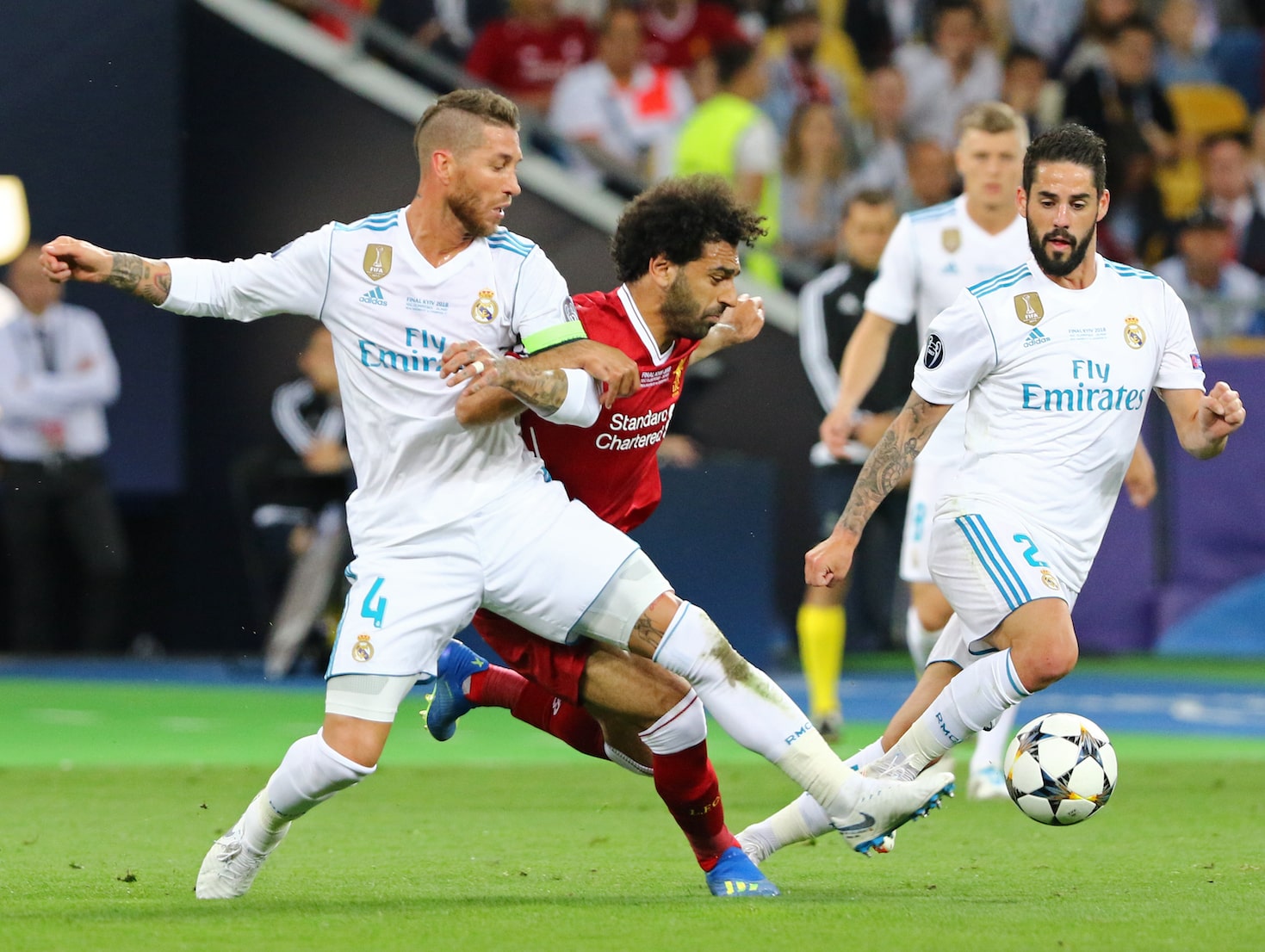
Sergio Ramos in the 2018 Champions League Final
Another player who has shown defensive adaptability is N'Golo Kante, the French midfielder who currently plays for Chelsea in the English Premier League. Kante is known for his tireless work rate and ability to cover ground quickly, which allows him to play in multiple positions in midfield and becoming the main stopper of opponents attacks.
Kante's defensive adaptability was on display in the 2018 World Cup, where he played a key role in France's successful campaign. In the final against Croatia, Kante adjusted his defensive approach to nullify the threat of Luka Modric, Croatia's playmaker. He tracked Modric's movements closely and disrupted his passing lanes, preventing him from controlling the game.
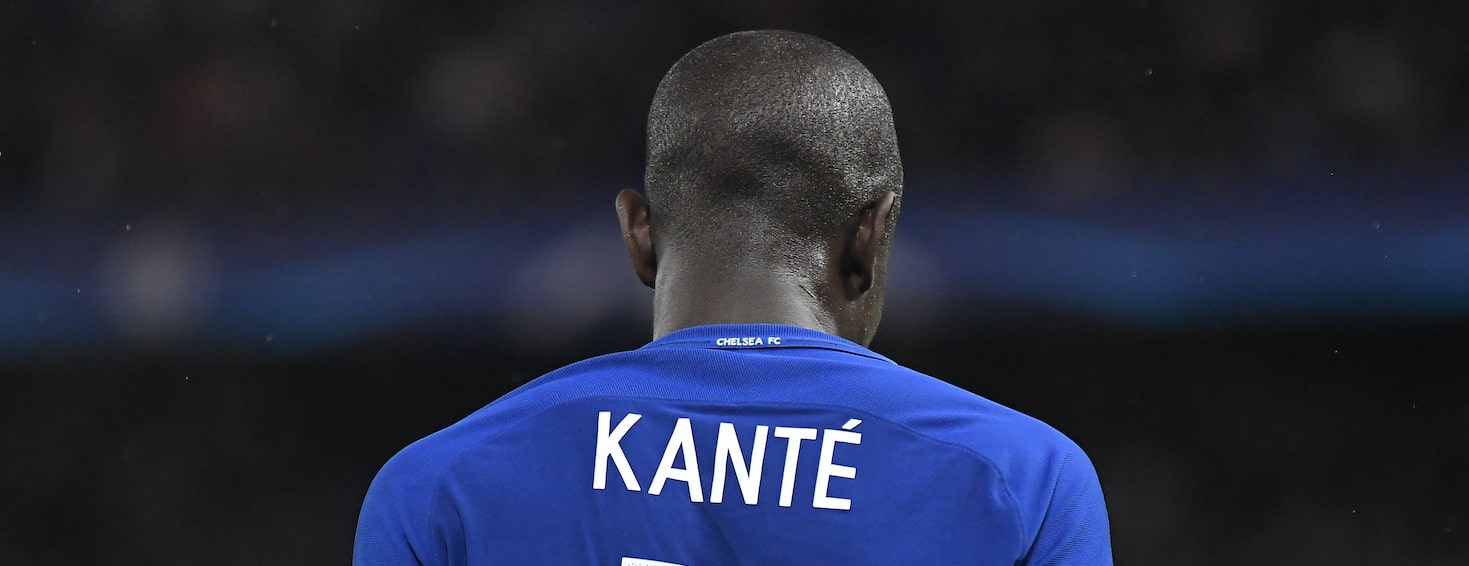
Finally, Virgil van Dijk, the Dutch center-back who plays for Liverpool, has also demonstrated his defensive adaptability. Van Dijk is known for his excellent positioning, aerial ability, and composure on the ball. He is also a vocal leader on the field, who organizes his teammates and communicates effectively. Van Dijk's defensive adaptability was evident in the 2019 Champions League final, where he helped Liverpool to keep a clean sheet against Tottenham Hotspur.
Van Dijk adjusted his defensive approach in response to Tottenham's attacking threat, which included the speedy forward Son Heung-min and the creative midfielder Christian Eriksen. Van Dijk played a more conservative role, allowing his center-back partner to push up and engage Tottenham's attackers. He also used his aerial ability to win important headers and clearances in the box.
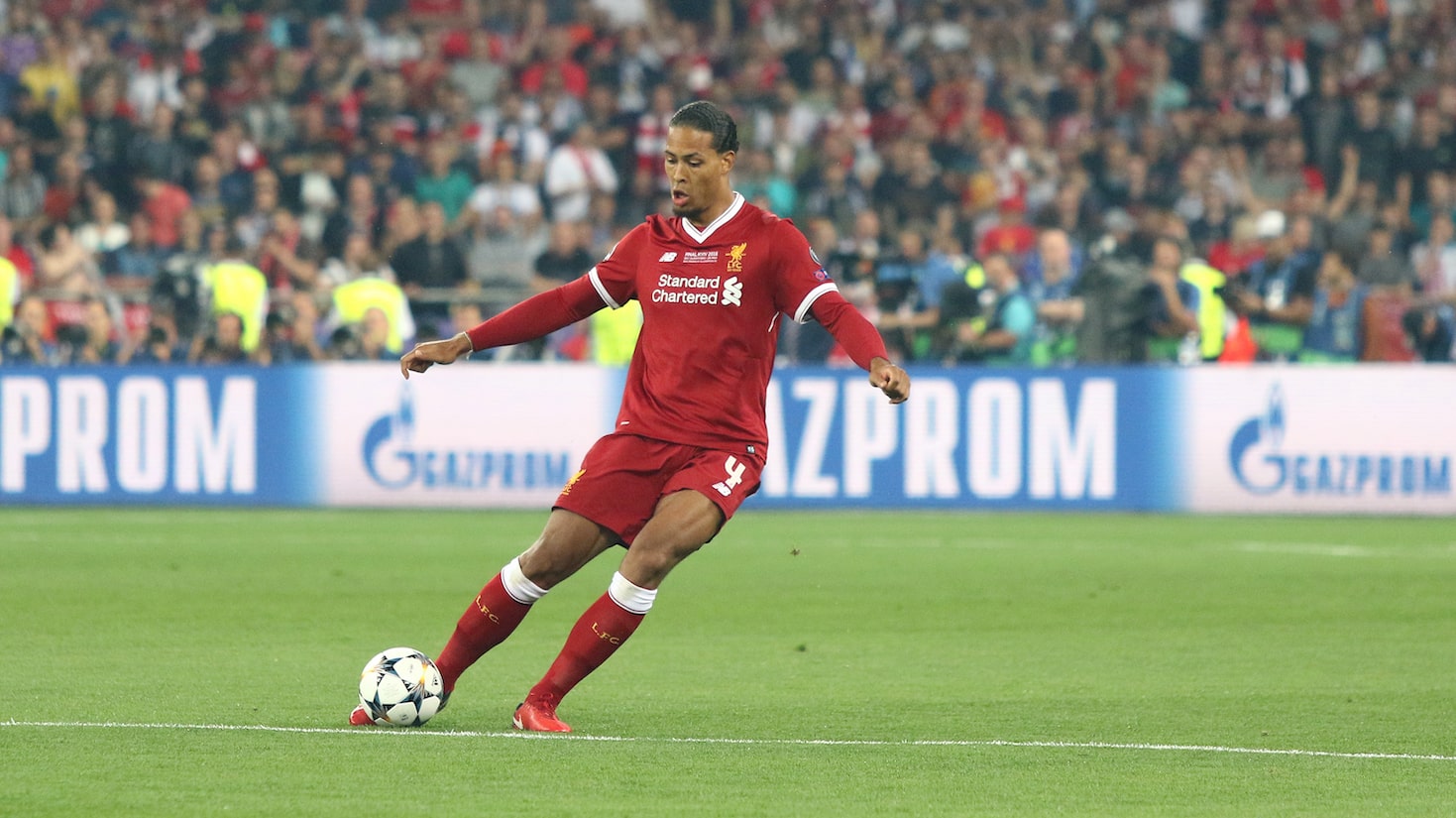
In conclusion, defensive adaptability is a crucial aspect of soccer defense. By staying flexible and adjusting their defensive approach to different opponents and situations, soccer teams can neutralize their opponent's strengths, limit scoring opportunities, and ultimately be more successful on the field. Sergio Ramos, N'Golo Kante, and Virgil van Dijk are just a few examples of soccer players who have demonstrated their defensive adaptability and helped their teams to win important games. As a coach or professional, it's important to encourage your players to be adaptable and open to different defensive strategies, so they can be effective in all situations.


Improve Your GameJust 1.99 p/m
Exclusive drills and sessions, get involved today!
- 100’s of Drills
- Coach to Camera Videos
- Sessions from Pro’s
- Industry Leading Advice
Defensive fundamentals are essential for any team to be successful in soccer. Coaches should focus on teaching players the basics of defensive positioning and strategy, and emphasize the importance of working as a unit. By teaching players these fundamentals and strategies, coaches can help ensure the success of their team’s defensive strategy and keep the ball out of the net. With the right knowledge and training, coaches can help their players become proficient defenders, giving them the tools they need for success on the field.
In conclusion, a strong defense is crucial for any soccer team to succeed. Coaches should prioritize teaching their players the fundamentals of defensive positioning and strategy, including communication, shifting, and working as a unit. By emphasizing these skills and strategies, coaches can help their players become proficient defenders capable of shutting down the opposition's attack and winning possession of the ball.
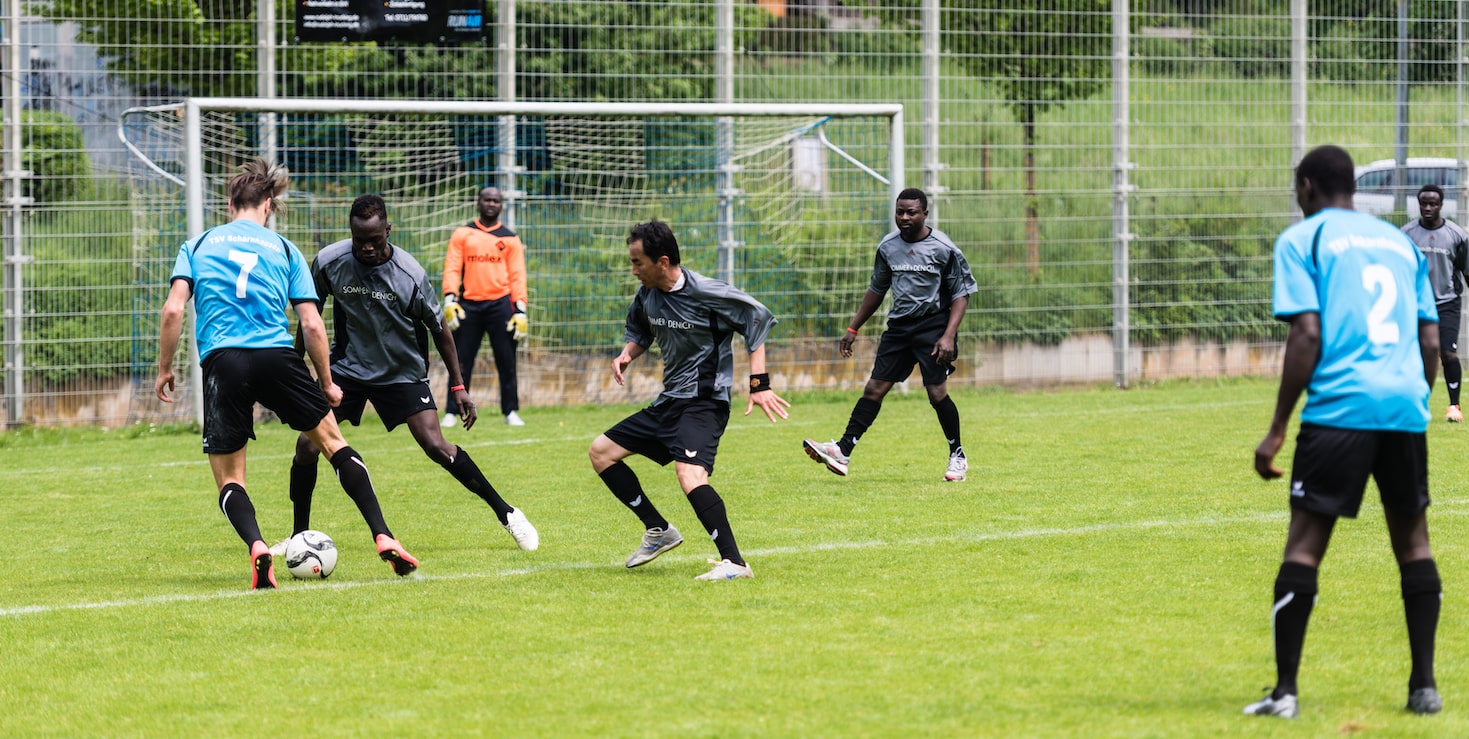
Furthermore, it's important for coaches to recognize that defensive skills are not innate but can be developed with practice and repetition. Therefore, coaches should provide their players with ample opportunities to practice and refine their defensive skills through drills, scrimmages, and game situations.
Ultimately, a team's success depends on the effectiveness of its defense, and coaches who prioritize teaching defensive fundamentals will undoubtedly give their team an edge on the field. By instilling a strong defensive mindset in their players, coaches can help build a well-rounded and successful soccer team that can compete at the highest levels.
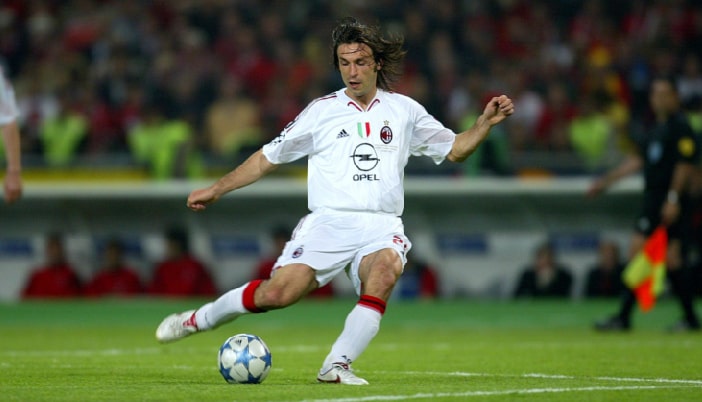
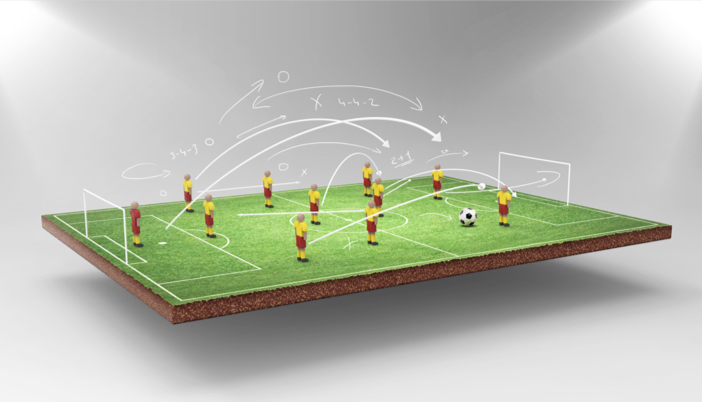
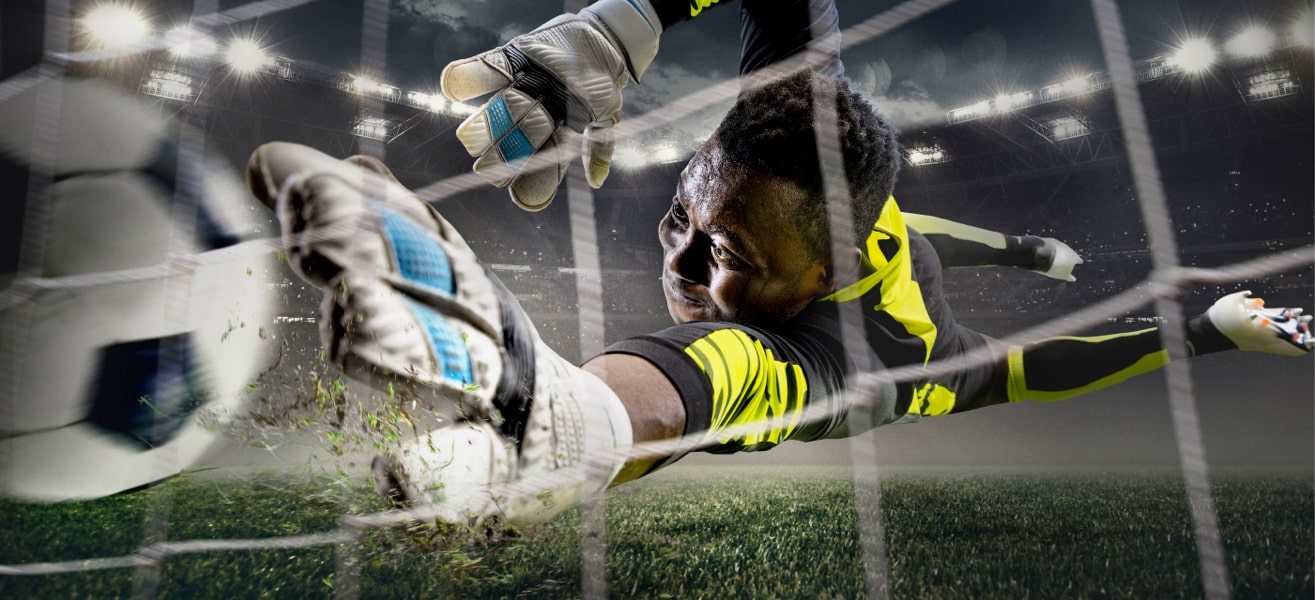
Cupello
Rethinking soccer coaching via our industry leading tools. Built to offer effective coaching development solutions for players and coaches of all levels.